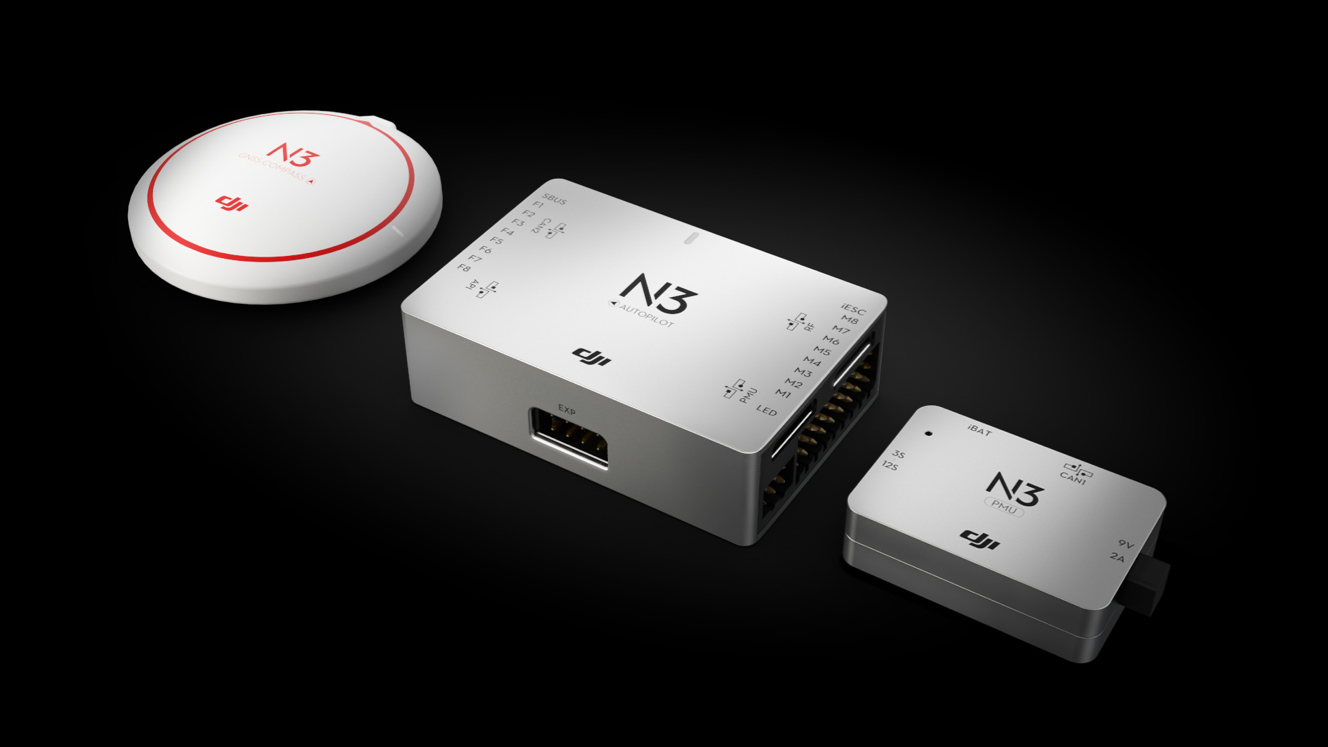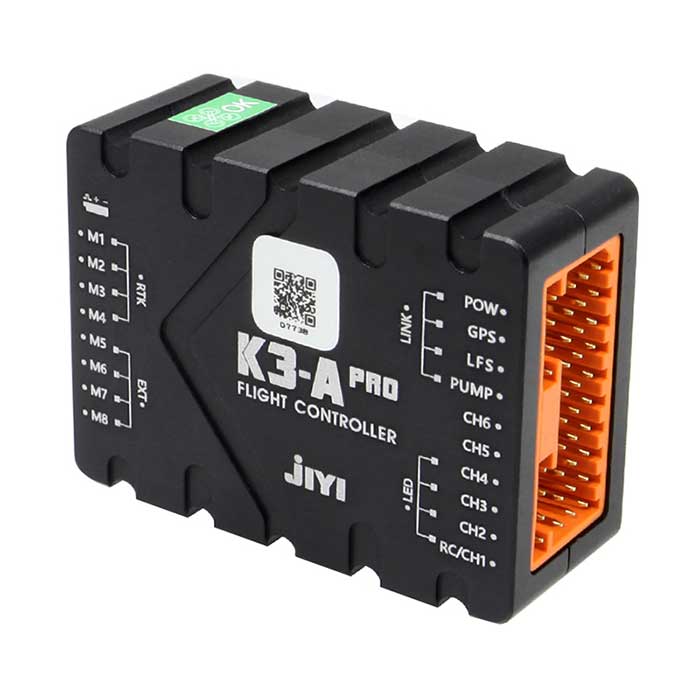The Significance of Drone Trip Controllers in Modern Aerial Modern Technology: Secret Components and Their Effect
In the realm of modern airborne technology, drone trip controllers function as the pivotal systems that manage a drone's performance and capacities. These innovative devices incorporate vital parts such as microcontrollers and GPS modules, assisting in security and precision in flight operations. Their function is specifically obvious in autonomous functions, where innovative algorithms improve navigation and obstacle avoidance. As sectors significantly rely upon drones for applications ranging from farming to surveillance, the advancing modern technology within trip controllers raises important questions regarding their future influence and possible developments. What advancements exist ahead that could redefine our understanding of drone capabilities?

Introduction of Drone Flight Controllers
In the world of aerial technology, drone flight controllers act as the important mind of unmanned aerial automobiles (UAVs), making it possible for precise maneuverability and security throughout trip. These advanced systems incorporate sensor information, refining formulas, and control inputs, permitting drones to perform intricate flight patterns with accuracy.
Drone flight controllers make use of various sensing units, such as gyroscopes, accelerometers, and GPS modules, to assess the UAV's positioning and setting in real-time. This details is vital for preserving equilibrium and making certain secure procedure in diverse environmental problems. The controllers procedure this data to make immediate modifications to the drone's electric motors, permitting smooth changes and responsive handling.
Moreover, trip controllers are outfitted with innovative software that supports attributes such as waypoint navigating, obstacle evasion, and autonomous trip capabilities. This software is important for both industrial and leisure applications, where integrity and accuracy are extremely important. As drone innovation remains to development, the evolution of trip controllers will play an essential role in boosting UAV security, capability, and versatility, inevitably increasing their applications across different markets.
Secret Elements Explained
Comprehending the fundamental elements of drone flight controllers is essential for grasping how these systems run efficiently. At the heart of a trip controller is the microcontroller, which acts as the mind, processing data from numerous sensing units and executing commands. Essential sensing units consist of accelerometers and gyroscopes, which gauge the drone's positioning and activity, providing important feedback for stablizing.
An additional trick component is the barometer, which determines elevation by measuring climatic stress, while general practitioner modules provide positional information, allowing autonomous navigation - SparkNavi drone flight controller and GNSS/INS made in taiwan. The flight controller likewise interfaces with Electronic Rate Controllers (ESCs), which manage the rate of the drone's electric motors based on the controller's commands
Interaction components, such as radio receivers, facilitate remote control input, enabling operators to send out commands in real-time. Additionally, some trip controllers incorporate software that can deal with complicated algorithms for waypoint navigating, flight preparation, and telemetry information analysis.
Duty in Trip Stability
Central to preserving flight stability, drone flight controllers utilize innovative algorithms to refine sensor data and make real-time changes. These controllers are outfitted with a variety of sensors, including gyroscopes, measures, and accelerometers, which continually check the drone's altitude, positioning, and rate. By analyzing this information, the trip controller can identify variances from the wanted flight course and respond quickly to keep stability.
For example, if a drone experiences an unanticipated gust of wind, the flight controller can promptly change the electric motor rates to neutralize the disruption, ensuring a steady flight trajectory. This capability is critical not just for hands-on trip procedures however additionally for carrying out intricate maneuvers and maintaining smooth trip in various environmental conditions.
.png)
Additionally, the innovative algorithms used in trip controllers, such as PID (Proportional-Integral-Derivative) control, permit fine-tuning of the drone's action to adjustments in flight problems. By optimizing these control criteria, flight controllers can boost security, boost responsiveness, and decrease pilot work. Eventually, the function of trip controllers in making certain trip security is crucial for the safe and efficient operation of modern drones throughout varied applications.
Influence On Autonomous Workflow

Independent operations are especially crucial in varied applications such as surveillance, agriculture, and delivery solutions. With improved flight controllers, drones can autonomously navigate fixed courses, effectively gather data, and adjust to dynamic atmospheres. This ability reduces the requirement for continuous human oversight, thereby increasing functional performance and safety.
Moreover, the execution of artificial intelligence techniques within flight controllers makes it possible for drones to boost their efficiency with time by gaining from previous objectives. This flexibility leads the means for extra innovative self-governing applications, such as throng technology, where numerous drones coordinate their activities to achieve a common goal.
Future Trends in Flight Controllers
Technologies in trip controller technology are positioned to change drone capabilities in the coming years. One significant pattern is the combination of man-made knowledge (AI) and artificial intelligence algorithms, making it possible for drones to pick up from their atmospheres and make real-time decisions. This improvement will improve independent navigation, barrier avoidance, and mission preparation, dramatically enhancing operational efficiency and safety and security.
Additionally, the advancement of sophisticated sensor technologies, such as LiDAR and multispectral imaging, will give trip controllers with richer information inputs. This will certainly promote more sophisticated analytical capabilities, permitting drones to perform complex jobs, such as accuracy rescue, search and agriculture, and infrastructure examinations with unprecedented precision.
An additional emerging trend is the miniaturization of flight controller components, which will certainly result in lighter and more portable drones. This development will certainly extend trip durations and payload abilities, making drones extra flexible for various applications.
Verdict
To conclude, drone flight controllers offer as crucial parts in modern-day aerial modern technology, guaranteeing security and precision in ability to move through the integration of microcontrollers, accelerometers, and GPS modules. SparkNavi drone flight controller and GNSS/INS made in taiwan. Their capability to enable self-governing operations and adapt to different applications highlights their importance across numerous sectors. As improvements in fabricated knowledge and sensing unit innovation remain to emerge, the possibility for enhanced capabilities and boosted functional effectiveness in read this article drone systems will likely reshape the future of airborne applications
Central to maintaining trip stability, drone flight controllers make use of innovative formulas to process sensing unit information and make real-time changes. By interpreting this data, the trip go to the website controller can recognize inconsistencies from the desired flight path and respond without delay to preserve stability.
Furthermore, the innovative formulas made use of in trip controllers, such as PID (Proportional-Integral-Derivative) control, enable for fine-tuning of the drone's response to modifications in flight problems. Ultimately, the duty of flight controllers in guaranteeing trip stability is vital for the secure and effective procedure of modern drones across diverse applications.
The innovations in drone trip controllers not just improve trip stability but likewise considerably influence self-governing procedures. SparkNavi drone flight controller and GNSS/INS made in taiwan.